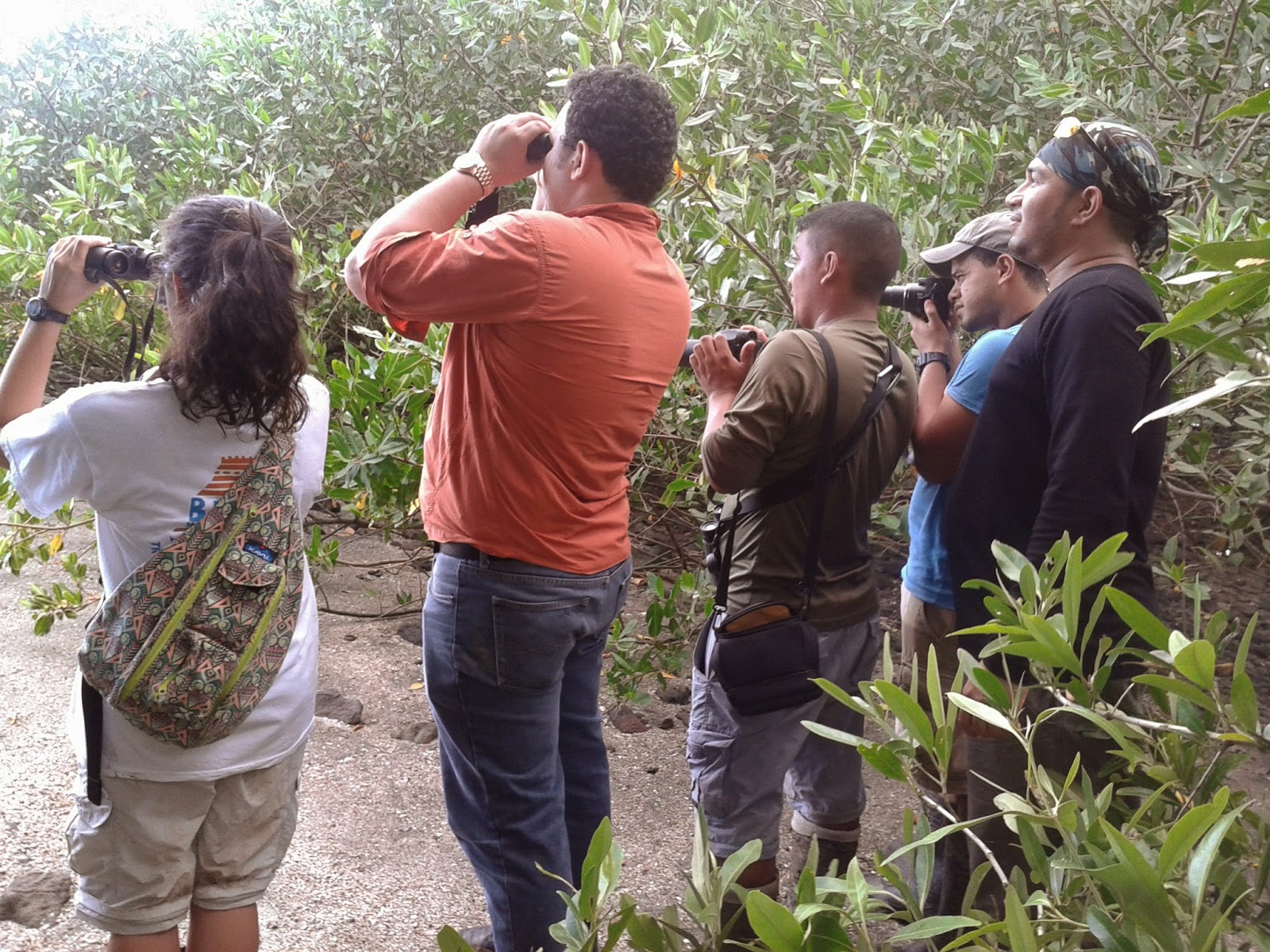You must know by now that I like to make bird lists: Life List, Country/Region Lists, Balcony Lists and, of course, Year Lists. Panama is a great country when you talk about birds, personally, my year lists exceed 500 species every year (without too much effort), and up to 800 species can be seen if you try hard... and certainly many more are possible (922 bird species have been seen this year in Panama according to eBird)! My country Year List was in 509, so I went yesterday to Panama Viejo in search of my last year-bird... a vagrant to our coast that had been reported recently by several observers (reports in Xenornis). I succeed, but the bird was so far that I tried it again today. This time, many local and visiting birders were after the bird... for Panamanian standards, the place was crowded!
The tide was retiring, exposing the mudflats... and many common species were scattered all along the place... but our main objective was not among them. I went to the small mangrove island behind the museum with some other birders, including Ovidio Jaramillo and Juan Pablo Ríos.
In the way, a single Franklin's Gull and a Gull-billed Tern showed well. Notice the white bar separating the black wing-tips from the rest of the wing in the Franklin's Gull and the general paleness of the Gull-billed Tern, which is the whiter tern of those regularly occurring in Panama.
 |
| Franklin's Gull. Adult in basic plumage |
 |
| Gull-billed Tern |
Soon, Ovidio spotted our objective from the mangroves. An American White Pelican was standing on the rocks behind the island. The huge size, white plumage with black primaries and pink bill were clearly noticed. The two pillars in the background belong to the expressway to the airport (the "South Corridor").
 |
| American White Pelican |
After a while, the bird flew away and landed in the same rocks where I saw it yesterday, with a big flock of Brown Pelicans. There is where it has been seen the last four days in a row!
 |
| American White Pelican |
The American White Pelican is just a vagrant to Panama, with just a handful of records, including my life pair in Punta Chame some years ago. It is so rare that it was a lifer for Juan Pablo and for my friend Justo Camargo, both experienced birders in Panama. What a great way to end the year... my year bird # 510! If you still need it, try for it now before is gone!













































.jpg)















